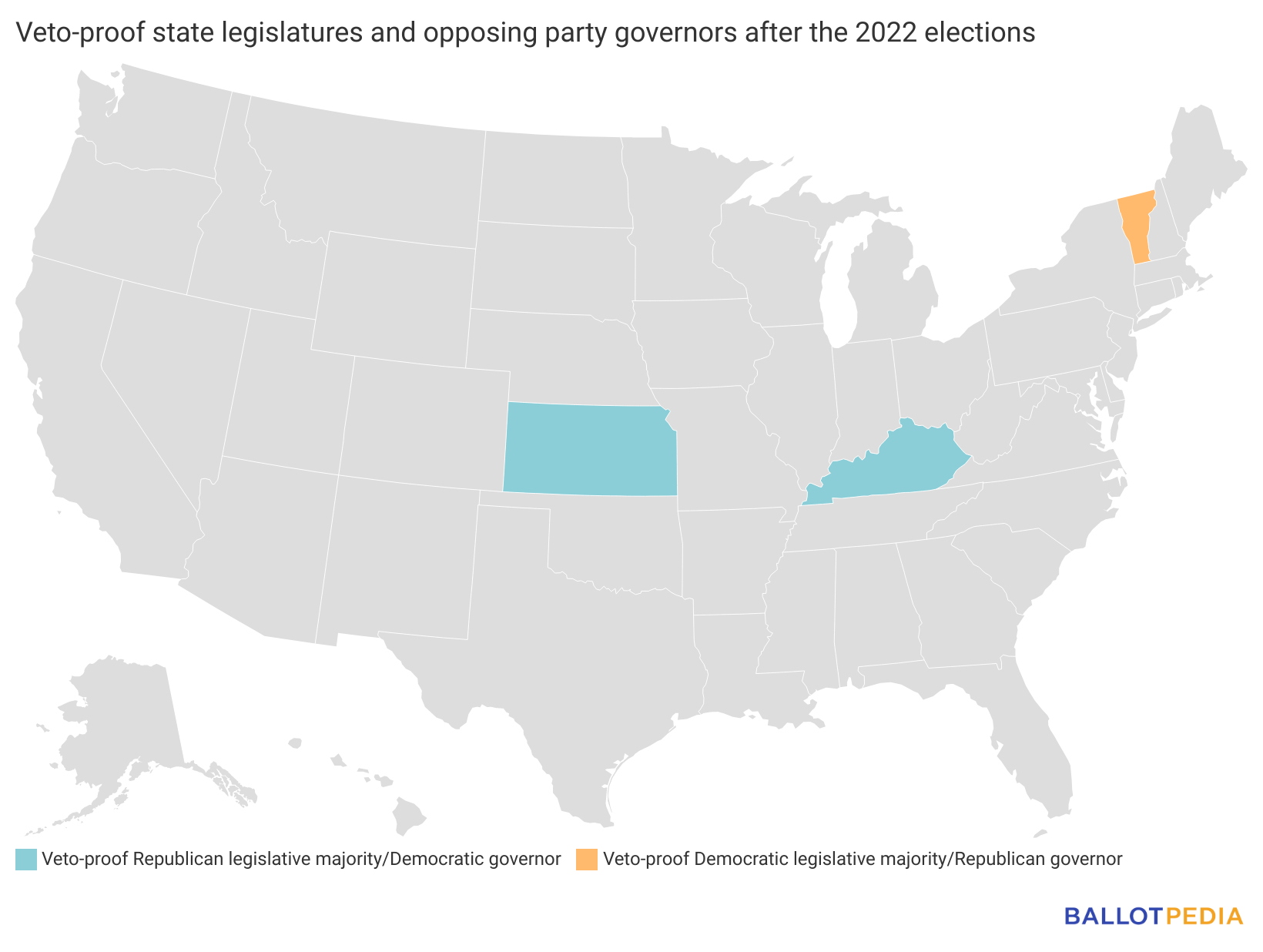Two of four states heading into the 2022 elections that had a veto-proof legislative majority and governor of the opposing party—Kentucky and Kansas—maintained that status after the elections. Vermont became a state with a veto-proof legislative majority and opposing-party governor as a result of the 2022 elections.
Maryland and Massachusetts will no longer have a veto-proof legislative majority and governor of the opposing party since the party that held a veto-proof majority also gained control of the governor’s office in the 2022 elections.
State governors may veto bills advanced by the state legislature. With sufficient support—between one-half and two-thirds of sitting legislators, depending on the state—state legislatures may overturn a gubernatorial veto. When one party controls enough seats to overturn a veto without support from the other party, a legislature can hold a veto-proof majority.
Heading into the 2022 elections, four states had a governor of one party and a veto-proof state legislative majority of the opposing party: Kansas, Kentucky, Maryland, and Massachusetts. Three states—North Carolina, Vermont, and Wisconsin—could have switched to having a veto-proof majority and an opposing party governor due to the 2022 elections.
- In Kentucky, Republicans maintained their veto-proof majority in both chambers of the state legislature. Gov. Andy Beshear (D) is not up for re-election until 2023.
- In Kansas, Governor Laura Kelly (D) won re-election. Republicans maintained their veto-proof majority in the state Senate since that chamber did not hold regular elections. Republicans also won at least two-thirds of the seats in the state House of Representatives.
- In Maryland, Democrats won the governorship while maintaining their veto-proof state legislative majority and became a Democratic trifecta. Wes Moore (D) won the Maryland gubernatorial election. Incumbent Larry Hogan (R) was term-limited.
- In Massachusetts, Democrats won the governorship while maintaining their veto-proof state legislative majority and became a Democratic trifecta. Maura Healey (D) won the Massachusetts gubernatorial election. Incumbent Charlie Baker (R) did not run for re-election.
- In Vermont, Democrats gained a veto-proof majority in the state legislature and Phil Scott (R) was re-elected governor.
Two states could have gained a veto-proof legislative majority with an opposing party governor in 2022.
- In North Carolina, Republicans gained a three-fifths majority in the state Senate. The final margin of the Republican majority in the North Carolina House of Representatives has not yet been determined. North Carolina holds gubernatorial elections in presidential election years, so Gov. Roy Cooper (D) was not up for re-election.
- In Wisconsin, Republicans gained a two-thirds majority in the state Senate but fell at least two seats short of a two-thirds majority in the Wisconsin State Assembly. Incumbent Gov. Tony Evers (D) won re-election.
Four states with a governor of one party and a veto-proof state legislature of the opposing party—Kansas, Kentucky, Maryland, and Massachusetts—maintained that status after the 2020 elections. None of those four states held gubernatorial elections that year. Five states could have switched to having a veto-proof state legislature and an opposing party governor because of the 2020 elections but none of them achieved the sufficient legislative majorities to achieve that status.
Additional reading:


